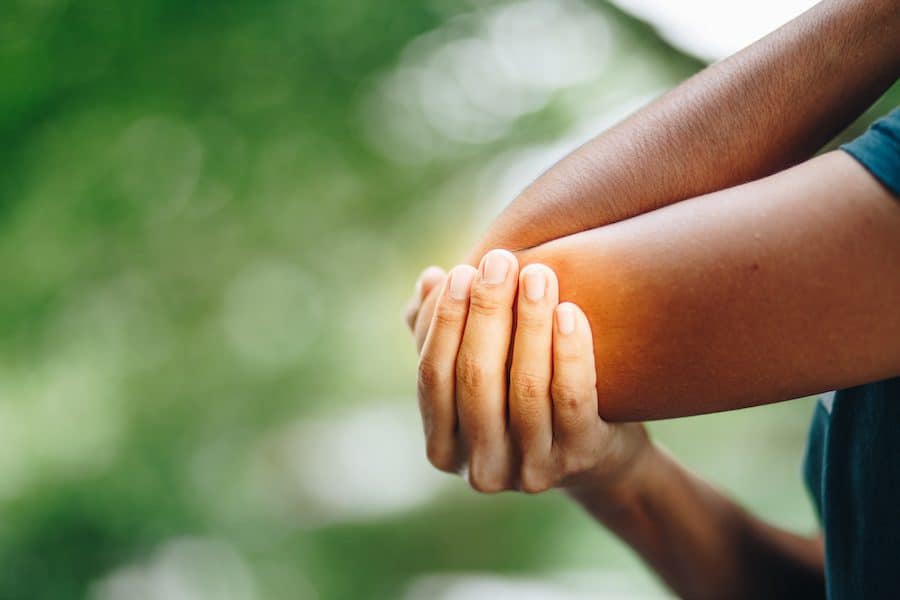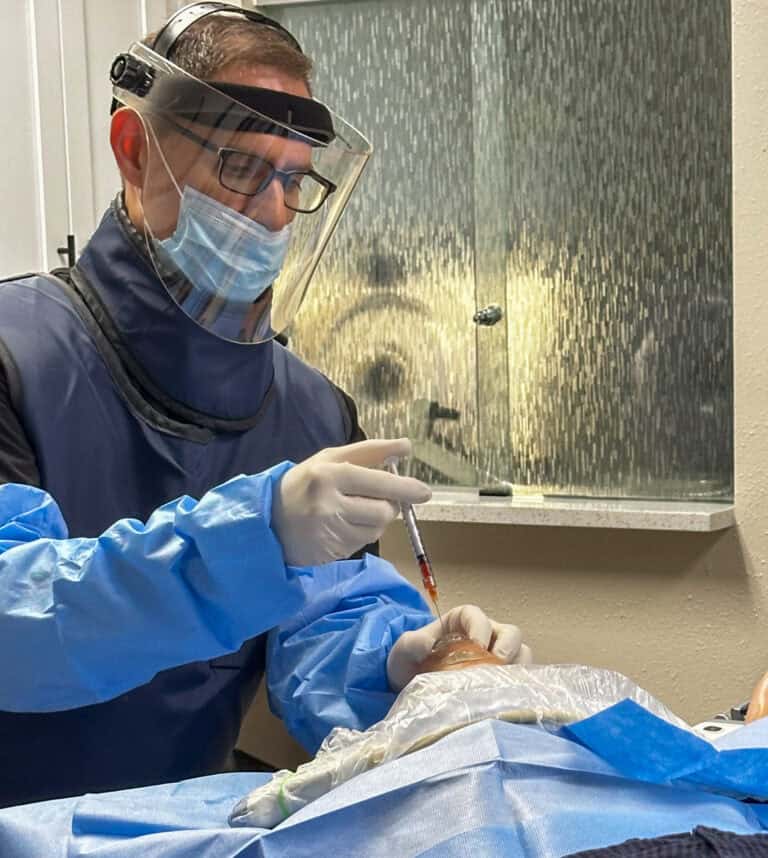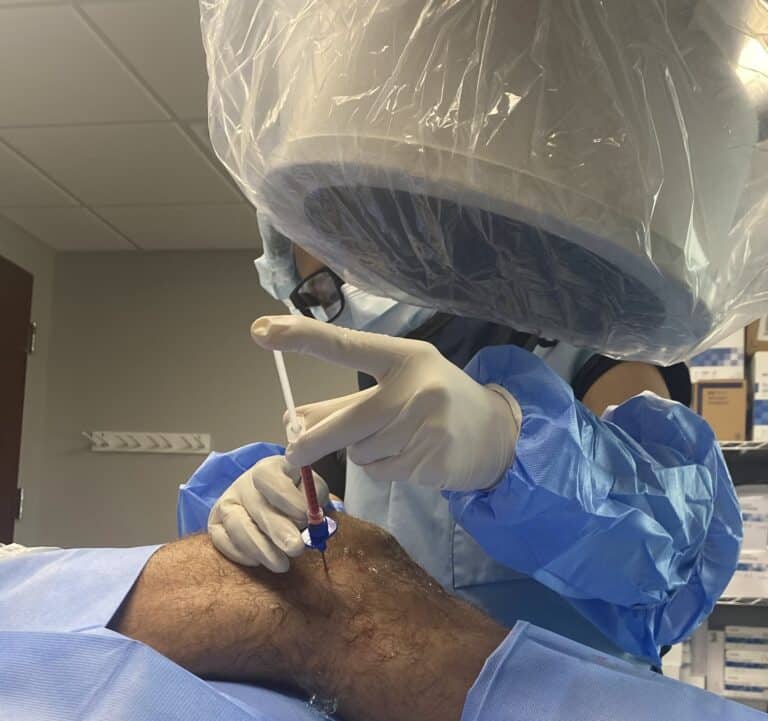You’ve probably heard the term, tennis elbow but are you aware that playing tennis isn’t the only cause? The condition is actually fairly common, occurring in approximately one person in every one-hundred. Let’s explore the condition’s causes, learn how to recognize the symptoms, explore new, innovative treatment methods. Surgery is seldom the best solution. Regenerative medicine is often a better option.
What Is Tennis Elbow?
Physicians refer to tennis elbow by its technical title of lateral epicondylitis. The painful condition occurs when the forearm muscle tendons originating on the outside of the elbow bone are damaged and/or degenerated.
What Causes Muscle and Tendon Damage?
Injury
If the tendons in the forearm are torn or strained as a result of injury, the pain of tennis elbow is experienced. In such a case the cause is apparent. In other cases, the damage develops over time typically when someone does a repetitive movement, often as a result of one’s profession or exercise routine.
Overuse
Repetitive motion as obviously occurs in the sport of tennis is a common cause, though the sport is far from the only triggering activity. The condition strikes factory employees, construction workers, cashiers, professional cleaning persons, and others who move their arms in a similar manner for many hours on a regular basis.
Neck Issues as a Contributing Factor
An often overlooked cause of tennis elbow is nerve constriction or damage in the neck area. Golfer’s elbow, similar to tennis elbow but occurring on the inside of the elbow joint and forearm, has particularly been linked to nerve issues in the neck.
Tennis elbow too often occurs following or simultaneously with neck pain and problems at that location. Sometimes neck conditions can contribute to tennis elbow pain, even when the patient does not experience neck pain. Thus, conditions of the neck should always be addressed in addition to the direct treatment of the elbow joint and forearm.
Recognizing the Symptoms
Pain in the forearm is the obvious symptom of tennis elbow. The tendons in the forearm and use of the muscles that extend into the hand become painful when reaching out to grasp objects. The problem can occur in anyone who suffers an injury or participates in activities requiring repetitive motion, but it occurs most commonly during middle age.
Addressing the Problem Promptly
Immediate consultation with a medical professional is the best course of action if you suspect you may have this condition. Delaying treatment can create further damage, such as more extensive tears in the affected tendons.
Physical Therapy
An initial treatment option that provides a solution for some people experiencing tennis elbow is physical therapy. Wrist splints can relieve the pain of the condition and the exercises prescribed by physical therapists. The splints also help improve grip strength.
Should physical therapy, therapeutic tape, and activity modification fail to relieve the pain, a steroid shot will often be recommended and can often work to bring down swelling and temporarily relieve symptoms. But research points to the side effects of cell damage often noted with high doses of cortisone that can lead to greater tearing and permanent damage.
Why Avoid Steroid Shots and Unnecessary Surgery?
Should physical therapy, therapeutic tape, and activity modification fail to relieve the pain, a steroid shot will often be suggested to bring down swelling and relieve symptoms. But research points to the side effects of cell damage often noted with high doses of cortisone that can lead to greater tearing and permanent damage.
Surgery has often been recommended for cases that couldn’t be resolved with preliminary treatment methods. But surgery should be approached only as a last resort.
Treating tennis elbow with the surgical approach is risky at best, requires a long recovery process; six weeks in most cases. The process is invasive and can cause further damage to the involved tendons. Grip strength may be greatly reduced.
In more and more incidences, regenerative therapies that support the body’s own repair processes are being found to resolve the condition more effectively, allowing patients to avoid the cost and risk of surgery.
The Regenerative Approach – Today’s Best Tennis Elbow Treatment
Progressive practitioners today often utilize platelet-rich plasma (PRP), or their own bone marrow concentrate injections to stimulate the body’s own cell regenerative healing process. These treatments have been noted by many as more effective than steroids.
(PRP) is considered a definitive treatment, appropriate for most patients. How does this revolutionary approach work? Precisely directed, ultrasound-guided injections of highly concentrated healing platelets, from the patient’s own body are utilized in the careful creation of tiny holes in the damaged tendon, in order to encourage new inflammation in this area and help the body heal itself.
In addition to treating the elbow directly, it is important to address the possibility of nerve damage in the cervical spine, as a contributing factor. If any pinched nerves or irritated tissue is discovered, that area is also treated with the patient’s own platelets.
Stem cells can be injected in a similar manner. These are sourced from the patient’s own bone marrow. What better technique for healing can be found than boosting the intelligent, natural methods of our own bodies.
The Results are Well Worth the Wait
Steroids may relieve pain faster, but they can further damage tissue. (PRP) and stem cell injections take a bit of time to reach full effect, but the healing is natural and enduring.
Patients can usually return to work the day after the treatment. Simply following a reasonable, healthy life-style aids the healing effect.
The author of this physicians’ group article details how “Treating With Platelet Rich Plasma is Making the Difference” (in tennis elbow treatment).
Want to learn more? Visit our site to read a more thorough explanation of Regenexx procedures for elbow injuries. Think you may be suffering from tennis elbow, arthritis, or other repetitive motion injuries? Contact us to schedule an appointment.










